In the spirit of the changing seasons, today I’m sharing an extensive guide on all things WINTER SQUASH.
The world of winter squash is filled with gorgeous colors, funky shapes, and sweet, velvety flesh that makes for incredible soups, big veggie roasts, and cozy baked goods – but they can also be a bit intimidating! Not sure how to select the best squash? How to store them? Or understand the difference between all the varieties, and the best ways to cook each one?
I’ve got you covered.
(There’s even a super helpful video tutorial showing you exactly how to peel + break down a butternut squash).
This guide is JAM PACKED with info, so let’s get right to it!
PS – It’s the first Friday of the month, which means this post is available to ALL newsletter subscribers. For full access to updates from our farm, veggie gardening tutorials + new seasonal recipe every week, consider joining as a paid subscriber.
Winter Squash Selection & Storage
SELECTION - When purchasing winter squash, look for squash that are heavy for their size with firm outer skin (no bruises or soft spots). The stems on winter squash should be brown, dry, and very firm (not green and wet).
STORAGE - Store your winter squash in a cool, dark, dry spot like a pantry. Note that shelf life will vary depending on the variety, and acorn, delicata, and spaghetti squash tend to be the most perishable, and they are best enjoyed within a month or so. Other varieties like butternut, kabocha, and pumpkins can typically be stored for for 3-4 months.
Winter Squash Varieties
*Note that there are a LOT more varieties of winter squash out there, but this is a list of the most common ones + cooking tips for each variety.
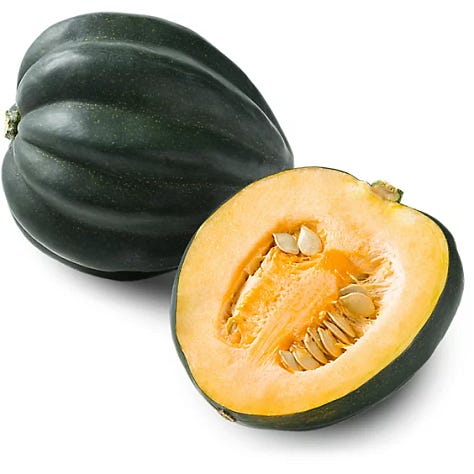

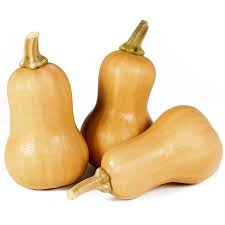
Acorn - named for it’s acorn-like shape, this variety of winter squash has dark green outer skin and bright orange flesh. The flavor is nutty and has a mild sweetness, and the texture can be a bit fibrous. Their smaller size makes them a great option for personal-sized portions and for stuffing.
Cooking tips: Due to the thick and heavily ridged outer skin, don’t try peeling. Cut the squash into halves or wedges, scoop out the seeds, rub the flesh with a bit of olive oil and salt + pepper (and/or any other herbs you’d like) and roast cut-side down in a 400F oven for 35-45 minutes until the flesh can be easily pierced with a knife.
Butternut – one of the most popular types of winter squash, butternuts have a light orange/cream colored outer skin and are bright orange on the inside. The flesh tends to be on the sweeter side, and turns velvety smooth when cooked and is great for making soups, purees, etc.
Cooking tips: Scroll to the bottom of this post for a video tutorial on how to peel + dice butternut squash. Alternatively, you can cut the squash in half lengthwise (skin still on), scoop out the seeds, and rub with olive oil, salt+pepper and roast cut-side down in a 400F oven for about 45 minutes, or until tender.
Baby Butternut – also known as Honeynut squash, these lil cuties are adorable, miniature butternut squash.
Cooking tips: I like to cut baby butternut squash in half lengthwise and roast them cut-side down in a 400F oven for 25-30 minutes, then serve (with the skin still on) as cute, personal-sized butternut portions.
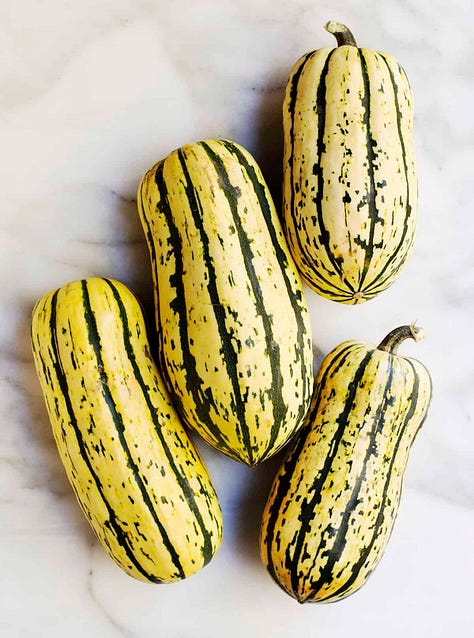
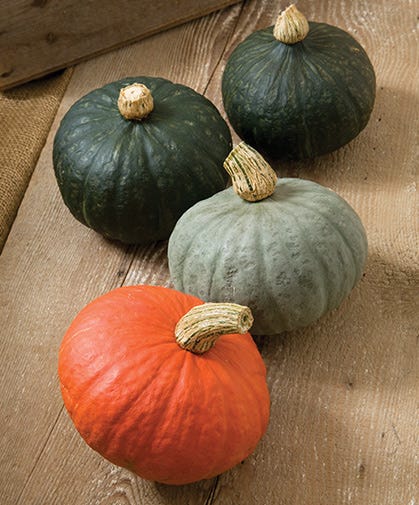
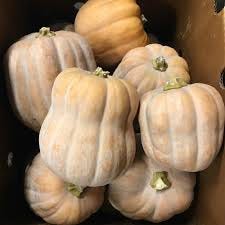
Squash varieties (L to R): Delicata, Kabocha, Koginut
Delicata – a funky variety of winter squash with a distinctive cylindrical shape and pale yellow outer skin with dark green stripes. The flesh is light yellow and super sweet, smooth, and moist. The outer skin is very thin and doesn’t need to be peeled, which makes delicata super easy to prepare and enjoy.
Cooking tips: Cut the squash in half lengthwise (skin on), scoop out the seeds, and rub with olive oil, salt + pepper and roast cut-side down in a 400F oven for 30-40 minutes, or until tender. Alternatively, you can cut the squash in half lengthwise, scoop out the seeds, and then cut the flesh into half-moons before roasting.
Kabocha – also known as a Japanese pumpkin, this short and rounded variety of winter squash can have either orange or green outer skin, and bright orange flesh. The flavor is super sweet, dense, and creamy and makes a fabulous soup or puree.
Cooking tips: Due to the thick and heavily ridged outer skin, don’t try peeling. Cut the squash into halves or wedges, scoop out the seeds, rub the flesh with a bit of olive oil and salt + pepper (and/or any other herbs you’d like) and roast cut-side down in a 400F oven for 35-45 minutes until the flesh can be easily pierced with a knife.
Koginut – a lesser known but increasingly popular type of winter squash, which is a cross between kabocha and butternut squash. Koginuts have a unique squatty shape and a light brown/cream outer skin with vivid orange flesh. The flavor is very sweet and the texture is velvety smooth… definitely give this variety a try if you can find it!
Cooking tips: Due to the thick and heavily ridged outer skin, don’t try peeling. Cut the squash into halves or wedges, scoop out the seeds, rub the flesh with a bit of olive oil and salt + pepper (and/or any other herbs you’d like) and roast cut-side down in a 400F oven for 35-45 minutes until the flesh can be easily pierced with a knife.


Pie/Sugar Pumpkin – pie (aka Sugar) pumpkins are specifically bred for cooking/baking (the larger varieties of pumpkins used for Jack ‘O Lanterns are certainly edible, but their watery, fibrous flesh won’t be nearly as delicious). Pie pumpkins tend to be on the smaller side, and are a good all-around winter squash with classic sweet and smooth flesh.
Cooking tips: Cut the pumpkin in half, scoop out the seeds, rub the flesh with a bit of olive oil and salt + pepper (and/or any other herbs you’d like) and roast cut-side down in a 400F oven for 45-60 minutes until the flesh can be easily pierced with a knife. (Exact cooking time will vary depending on the size of your pumpkin).
Spaghetti – with unique flesh reminiscent of angel hair pasta when cooked, spaghetti squash makes a great grain-free pasta option. Spaghetti squash have a distinctive oblong shape and light yellow outer skin. The noodle-like flesh is mild and delicate, and is delicious when tossed in a yummy pasta sauce.
Cooking tips: Cut the spaghetti squash in half lengthwise (skin on), scoop out the seeds, rub the flesh with a bit of olive oil and salt + pepper and roast cut-side down on a rimmed baking sheet in a 400F oven for 35-45 minutes until the flesh can be easily pierced with a knife. When the squash is ready, remove from the oven and allow to cool a bit, then use a fork to scoop/shred the flesh into pasta-like strands.
Winter Squash Recipes
Here’s a rundown of some of my own recipes that showcase winter squash. A note that I’ve removed the paywall from these recipes so everyone can enjoy them:
Hearty quinoa salad with roasted butternut squash, apples, kale & apple cider vinaigrette
One-Pan maple salmon with butternut squash & lemon-tahini sauce
And here’s a list of more great winter squash recipes from other folks on Substack:
Squash soup with lentils & herbs from
/Harissa bolognese spaghetti squash from
/Winter squash soup from
/Crispy sheet pan chicken with honeynut squash and hot honey from
Video Tutorial: How to break down a butternut squash
What other winter squash questions do you have? Let me know in the comments!
That’s all for this week! If you enjoyed this newsletter, it means the world if you tap that “heart” button below, share this with a friend, subscribe, or leave a comment (it really helps more people find this newsletter)! Thank you so much for your support!

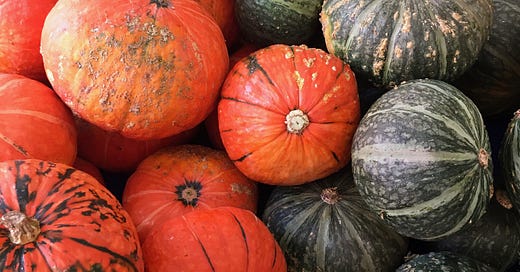





What a great resource! Winter squashes are one of my most favorite vegetables to grow. I especially love the kabocha varieties. For those who claim to dislike squash, I've found that going to the trouble to peel and cube a butternut, lightly season and then oven-roast, seems to convert even the staunchest anti-squasher lol.
Which ones have edible skins?